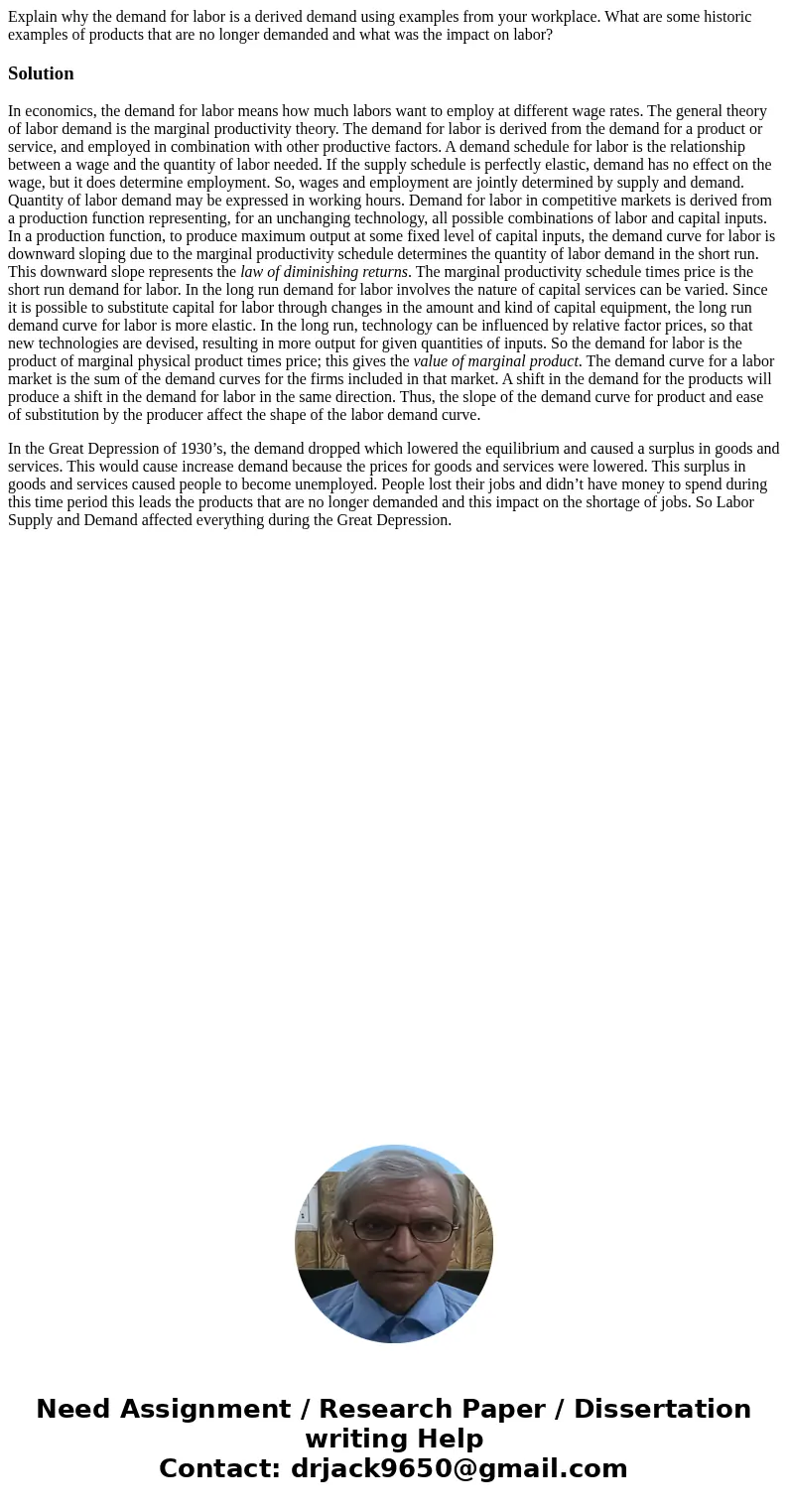Explain why the demand for labor is a derived demand using e
Explain why the demand for labor is a derived demand using examples from your workplace. What are some historic examples of products that are no longer demanded and what was the impact on labor?
Solution
In economics, the demand for labor means how much labors want to employ at different wage rates. The general theory of labor demand is the marginal productivity theory. The demand for labor is derived from the demand for a product or service, and employed in combination with other productive factors. A demand schedule for labor is the relationship between a wage and the quantity of labor needed. If the supply schedule is perfectly elastic, demand has no effect on the wage, but it does determine employment. So, wages and employment are jointly determined by supply and demand. Quantity of labor demand may be expressed in working hours. Demand for labor in competitive markets is derived from a production function representing, for an unchanging technology, all possible combinations of labor and capital inputs. In a production function, to produce maximum output at some fixed level of capital inputs, the demand curve for labor is downward sloping due to the marginal productivity schedule determines the quantity of labor demand in the short run. This downward slope represents the law of diminishing returns. The marginal productivity schedule times price is the short run demand for labor. In the long run demand for labor involves the nature of capital services can be varied. Since it is possible to substitute capital for labor through changes in the amount and kind of capital equipment, the long run demand curve for labor is more elastic. In the long run, technology can be influenced by relative factor prices, so that new technologies are devised, resulting in more output for given quantities of inputs. So the demand for labor is the product of marginal physical product times price; this gives the value of marginal product. The demand curve for a labor market is the sum of the demand curves for the firms included in that market. A shift in the demand for the products will produce a shift in the demand for labor in the same direction. Thus, the slope of the demand curve for product and ease of substitution by the producer affect the shape of the labor demand curve.
In the Great Depression of 1930’s, the demand dropped which lowered the equilibrium and caused a surplus in goods and services. This would cause increase demand because the prices for goods and services were lowered. This surplus in goods and services caused people to become unemployed. People lost their jobs and didn’t have money to spend during this time period this leads the products that are no longer demanded and this impact on the shortage of jobs. So Labor Supply and Demand affected everything during the Great Depression.

 Homework Sourse
Homework Sourse